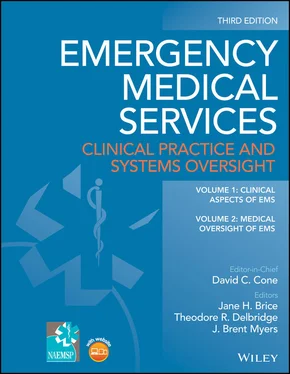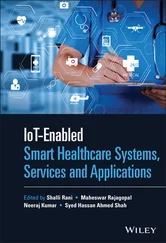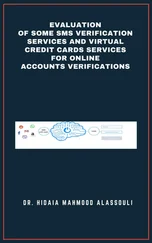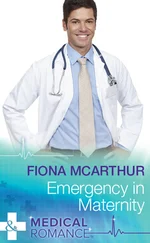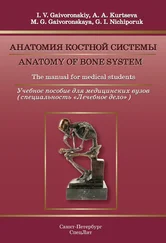Joseph P. Ornato, MDProfessor of Emergency Medicine Virginia Commonwealth University Operational Medical Director Richmond Ambulance Service Richmond, Virginia
Jon C. Rittenberger, MD, MSProfessor of Emergency Medicine Geisinger Commonwealth School of Medicine Danville, Pennsylvania
Nathan Roney, MD, MSEMS Fellow Brody School of Medicine East Carolina University Greenville, North Carolina
Ronald N. Roth, MDProfessor of Emergency Medicine University of Pittsburgh Medical Director City of Pittsburgh Department of Public Safety Pittsburgh, Pennsylvania
Aiman Saleh, MDEMS Fellow University of North Carolina Assistant Medical Director Orange County EMS Chapel Hill, North Carolina
Michael R. Sayre, MDProfessor of Emergency Medicine University of Washington Medical Director Seattle Fire Department Seattle, Washington
Terri A. Schmidt, MD, MSProfessor Emeritus of Emergency Medicine Oregon Health & Science University Portland, Oregon
David J. Schoenwetter, DOMedical Director Geisinger Life Flight Geisinger Health Danville, Pennsylvania
Richard B. Schwartz, MDProfessor of Emergency Medicine Medical College of Georgia at Augusta University Augusta, Georgia
Karen D. Serrano, MDClinical Assistant Professor of Emergency Medicine University of North Carolina Chapel Hill, North Carolina
Manish N. Shah, MD, MPHProfessor of Emergency Medicine University of Wisconsin‐Madison Madison, Wisconsin
Benjamin A. Smith, MDClinical Assistant Professor of Emergency Medicine University of North Carolina at Chapel Hill School of Medicine Medical Director AirLife NC Chapel Hill, North Carolina
James I. Syrett, MD, MBAOswego Health Oswego, New York Director of Prehospital Care Wayne County, New York
Asha K. Tharayil, MDAssistant Professor of Pediatrics UT Southwestern Medical Center Dallas, Texas
David P. Thomson, MS, MD, MPAClinical Professor of Emergency Medicine East Carolina University Brody School of Medicine Medical Director Vidant EastCare Greenville, North Carolina
Andrew Travers, MD, MScProfessor of Emergency Medicine Dalhousie University Provincial Medical Director Emergency Health Services Nova Scotia Halifax, Nova Scotia, Canada
Rickquel Tripp, MD, MPHEMS Medical Director University of Pittsburgh Medical Center Pittsburgh, Pennsylvania
Briana N. Tully, DOClinical Instructor of Emergency Medicine University of Virginia School of Medicine Charlottesville, Virginia
Clare Wallner, MD, MCRAssistant Professor of Emergency Medicine McMaster University Associate Medical Director HHS Centre for Paramedic Education & Research Hamilton, Ontario, Canada
Henry E. Wang, MD, MSProfessor of Emergency Medicine Ohio State University Columbus, Ohio
Stewart C. Wang, MD, PhDProfessor of Surgery Director International Center for Automotive Medicine University of Michigan Ann Arbor, Michigan
Michelle Welsford, MDProfessor of Emergency Medicine McMaster University EMS Physician HHS Centre for Paramedic Education & Research Hamilton, Ontario, Canada
Jefferson G. Williams, MD, MPHClinical Assistant Professor of Emergency Medicine University of North Carolina Deputy Medical Director Wake County Department of Emergency Medical Services Raleigh, North Carolina
James E. Winslow, MD, MPHAssociate Professor Wake Forest University Health Sciences Medical Director North Carolina Office of EMS Winston‐Salem, North Carolina
Donald M. Yealy, MDProfessor of Emergency Medicine, Medicine, and Clinical and Translational Sciences University of Pittsburgh School of Medicine Pittsburgh, Pennsylvania
Emergency Medical Services: Clinical Practice and Systems Oversight is firmly established as the standard reference text for the medical subspecialty of EMS. Within the following pages is the distillation of the clinical practice of EMS medicine. This text provides the updated (2019) core content of the specialty for the next generation of EMS leaders, and provides an ongoing reference for the practicing clinician. NAEMSP extends its heartfelt thanks and gratitude to the editors, David Cone, Jane Brice, Ted Delbridge, and Brent Myers, for their tireless work; and to the authors for their important contributions that have brought this important body of knowledge to a third edition.
Though in gestation for over three decades, the actual specialty of EMS medicine is still in its infancy. The success and the relevance of EMS medicine will succeed or fail by our stewardship in the coming years. The validation of a specialty solely by virtue of the hard‐won achievement of recognition by the house of medicine will not, by itself, lead to a general acknowledgement among our colleagues, communities, and local, state, and national leadership that EMS physicians are truly the leaders of this important facet of the health care system and, as such, possibly not realize that EMS is even part of the health care system! The inflection point may be seen when more communities become invested in seeing the outcomes and quality metrics of their EMS systems, and begin to require that medical oversight is provided by an EMS physician, in the same way that they would seek out qualified physicians for other aspects of their health care systems. We will know we are on track as medical directors evolve into chief medical officers, and more commonly become direct‐reports to mayors as opposed to dotted lines to middle management, expected to be in the C‐suite meetings on the same level as other chief executives. We have the responsibility to become more deeply invested in local, state, and national political advocacy to have a voice on issues that affect our practice, our personnel, and our communities. The natural evolution of our specialty that seems out of reach at this point can become a positive “disruptive” force for health care. Those of you who are reading this text are those who will be responsible for the advancement of our specialty.
The latest edition of the text will be published during an era that has seen the rise of a global pandemic, a true 100‐year event, the full scope and effects as yet unknown at the time of this writing. It is likely that there will be sustained changes in EMS as a result of the lessons learned. This third edition should serve as a solid foundation for what EMS is, and the principles within will provide guidance for what it can become. Although the post‐pandemic landscape remains unrevealed, what is known and what will unequivocally not change is the ethos of dedication, service, valor, and heroism demonstrated by EMS during this crisis.
Michael Levy, MD
President 2021 & 2022
National Association of EMS Physicians®
Since the earliest version of this textbook in 1989, the subspecialty of EMS medicine has evolved dramatically. In addition to increasing sophistication and application of expertise, EMS has developed to encompass a unique body of knowledge. Recognizing these features and an ongoing need to nurture the professionalism of those physicians who are and might become committed to EMS, the American Board of Medical Specialties recognized EMS as a subspecialty in 2010. The American Board of Emergency Medicine administered the first certification examination in 2013, and at this writing there are 880 ABEM‐certified EMS physicians, with substantially more emergency physicians certified in EMS than in any other emergency medicine sub‐specialty. The Accreditation Council for Graduate Medical Education has accredited 71 EMS fellowship programs as of this writing.
Читать дальше
